A collaboration with Shevon Lau, Sharon Gao, Adrian Chin Quan, Eliza Lucas, Clara Smith, Jenny (Seo Hyun) Lee and Amartej Dhami at Telstra.
As part of a transdisciplinary team featuring skills from Communications (Public Relations and Social Political Science), Visual Communication Design, Business, Animation, Interior and Spatial Design, ICT Engineering and Network Security and Journalism we had the opportunity to tackle the issue of Diversity and Inclusion in the workplace at Telstra for three weeks.
The challenge: Help Telstra determine a bold plan on how to become a truly inclusive employer for employees with disabilities.
Through our research, interviews, and scoping of the problem space and the complex adaptive system that is Telstra, we decided to refocus our efforts towards a more pointed brief - 'How might we equip managers to foster an environment where disability is normalised?' By the end of the three weeks, we had developed a series of interventions consisting of Primers, Starters and Facilitators in hopes of shifting the environment within Telstra to one where accessibility is more normalised.
Primers
We want to start the conversations about disabilities by opening people’s minds to understand that disabilities are prevalent and need to be discussed. To do this, we adopted the use of visual 'nudges' with a inexpensive sticker campaign.
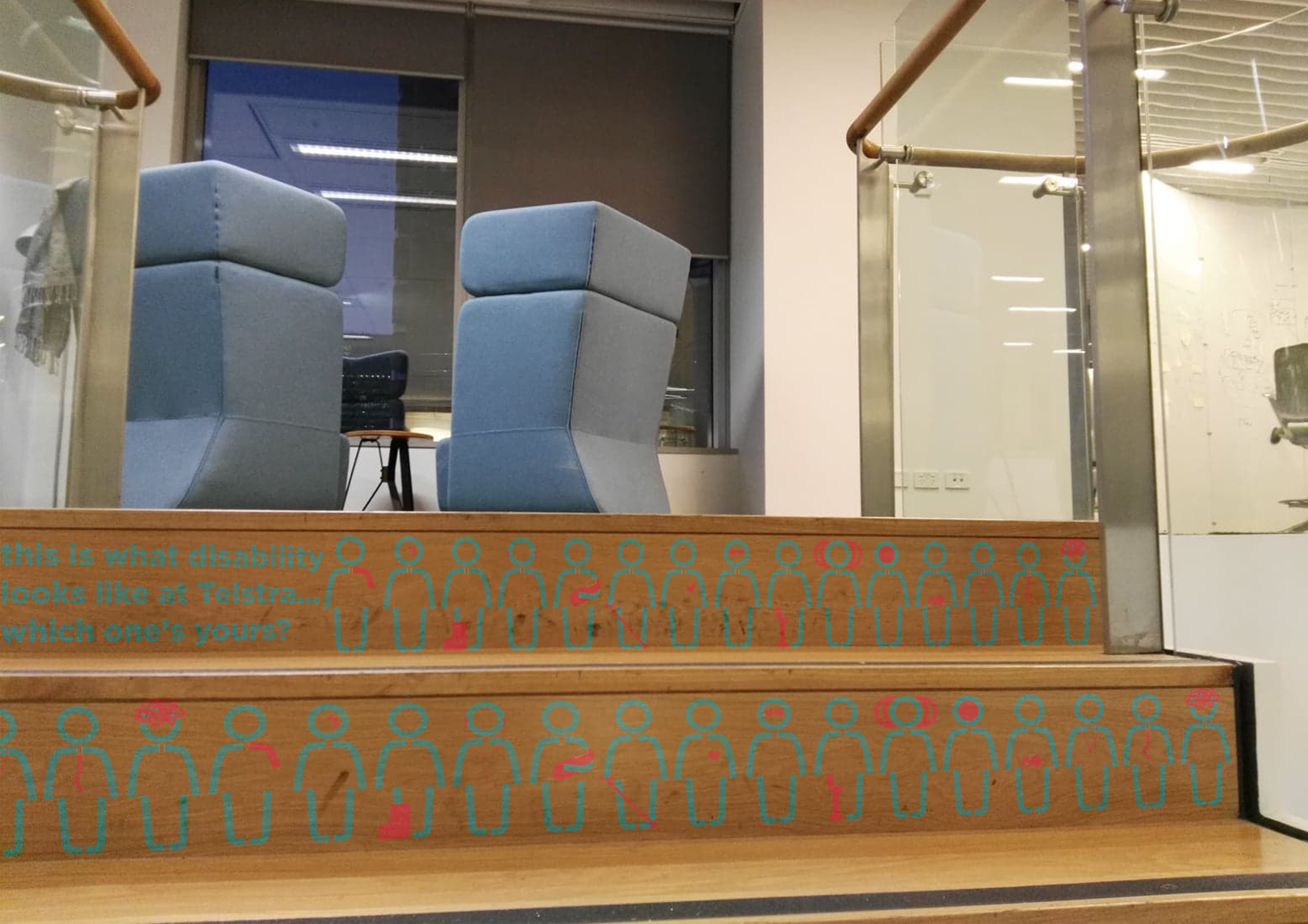
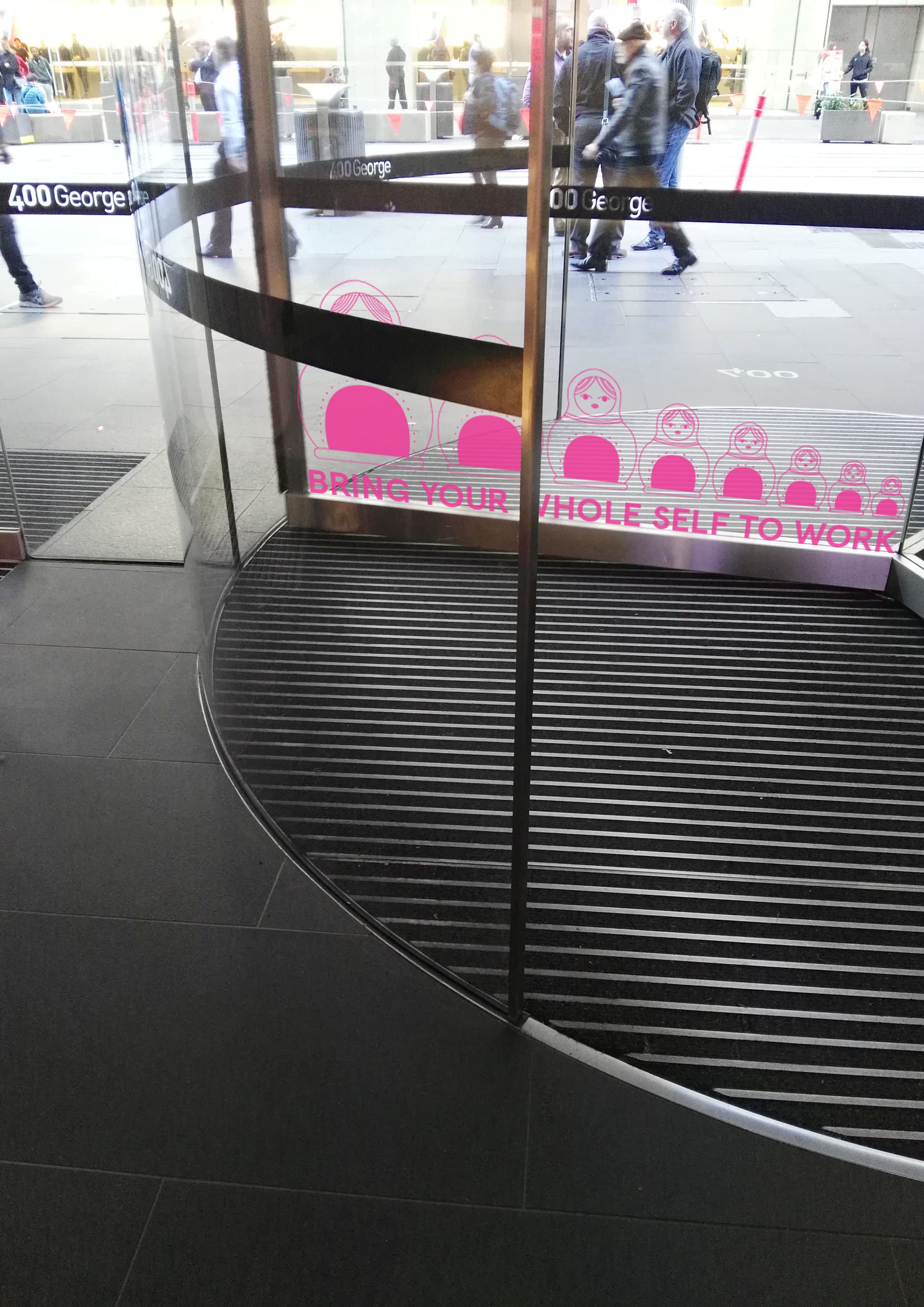
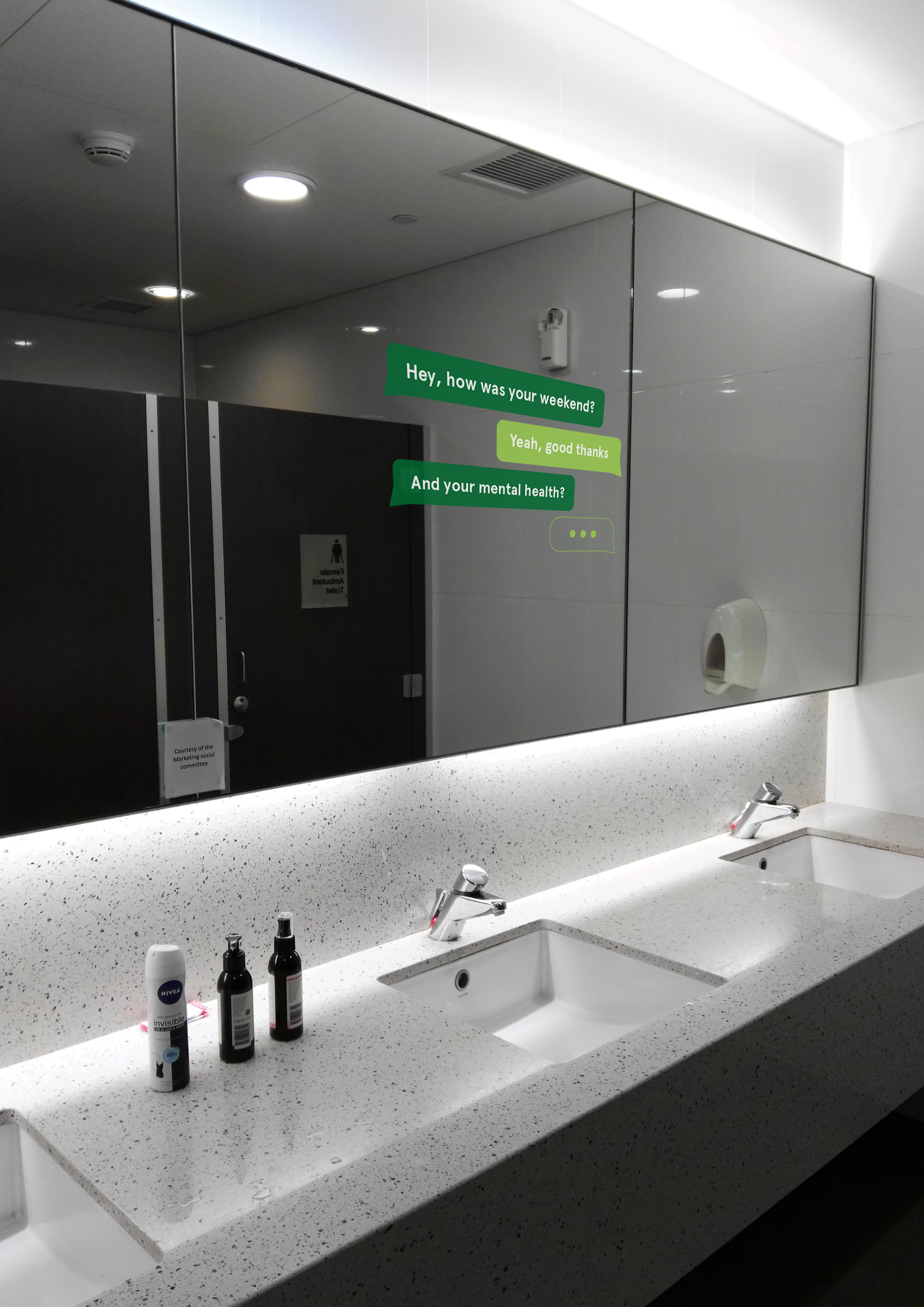
Starters
Starting a conversation can be difficult around topics that are often considered sensitive. We created a guide for helping people navigate the language with sensitivity and grace,
From our research, we found that there is a lack of disclosure of disability. This is driven in part by a fear or wariness that it may impact future career aspirations and it being a sensitive subject to begin with. Furthermore, there was a lack of awareness and knowledge around the vast range of disabilities. However, we can’t expect employees or managers to be experts. So how do you get the conversation to begin, so that at least the awareness and the curiosity to learn is sparked? So that it becomes normal to ask and talk about accessibility?
We drew from our lived experience and reflected on how TV shows like 'You Can’t Ask That' and ‘Taboo’ by Harley Breen drew upon themes of playfulness, wit, and humour to approach difficult and stigmatised topics. We recalled the short video, ‘Tea Consent’ that approached sexual consent as if offering tea to someone that stuck out in our minds as brilliant example of starting meaningful conversations in our own peer circles. To that end, we proposed a video concept titled ‘Have you had the Talk?’, drawing on the ambiguity of talking about sex education when we would actually be talking about accessibilty the entire time.
One of their biggest pain points we identified was not knowing how to approach the topic and what language to use. There is currently no resource that clearly defines the boundaries for communication and feedback from interviews pushed us to redefine the discourse around accessibility needs. We developed the beginning of a guide that would help to start defining those parameters and boundaries, to be continually iterated upon and added to as the social norms shift.
Facilitators
Once the conversation is open, now we need to facilitate practises that normalise disability. We’ve develop 2 actionable interventions to assist in the practice of keeping conversations open consistently within the workplace.
Stay Connected Meetings are one of our interventions that acts not like a performance review/appraisal, but as a relationship review. Employees assess and reflect upon their relationship with their workplace, their immediate team, manager and job satisfaction. It provides a platform and opportunity to be very open about any concerns or discomforts so that relevant adjustments and accommodations can be made. In the long run, it aims to reduce unwanted turnover and attrition of talented employees due to their accessibility needs not being met.
Our final intervention was for teams to develop Co-Design Team Charters. These team charters are as much as codifying ways of working and being as they are an in depth candid conversation between members of a team. They would co-design their team charters around ways of working, ways of knowing, skills, team roles, expectations of work, team roles and goals.
“It’s not so much the capability of an individual but the impact the individual has on the team."
These charters also provide an opportunity for discussing accessibility in a more normalised manner. By providing an avenue for conversation without putting a label on it means we’re making sure people with a visible or invisible disability have the opportunity to talk about their needs without having to be explicit about it.
The Process
Within these three weeks, immersed in the company we applied a design thinking methodology to scope the problem space and empathise with the various stakeholders in the company. Alongside countless interviews, meetings and check-ins, we applied many methods that allowed us better understand the challenges and potential interventions as we understood that there is no single 'solution' to the challenge of diversity and inclusion. As a complex problem, we had to identify and pinpoint aspects of the system that could be influenced and shifted such that the system could tip into a desired state.
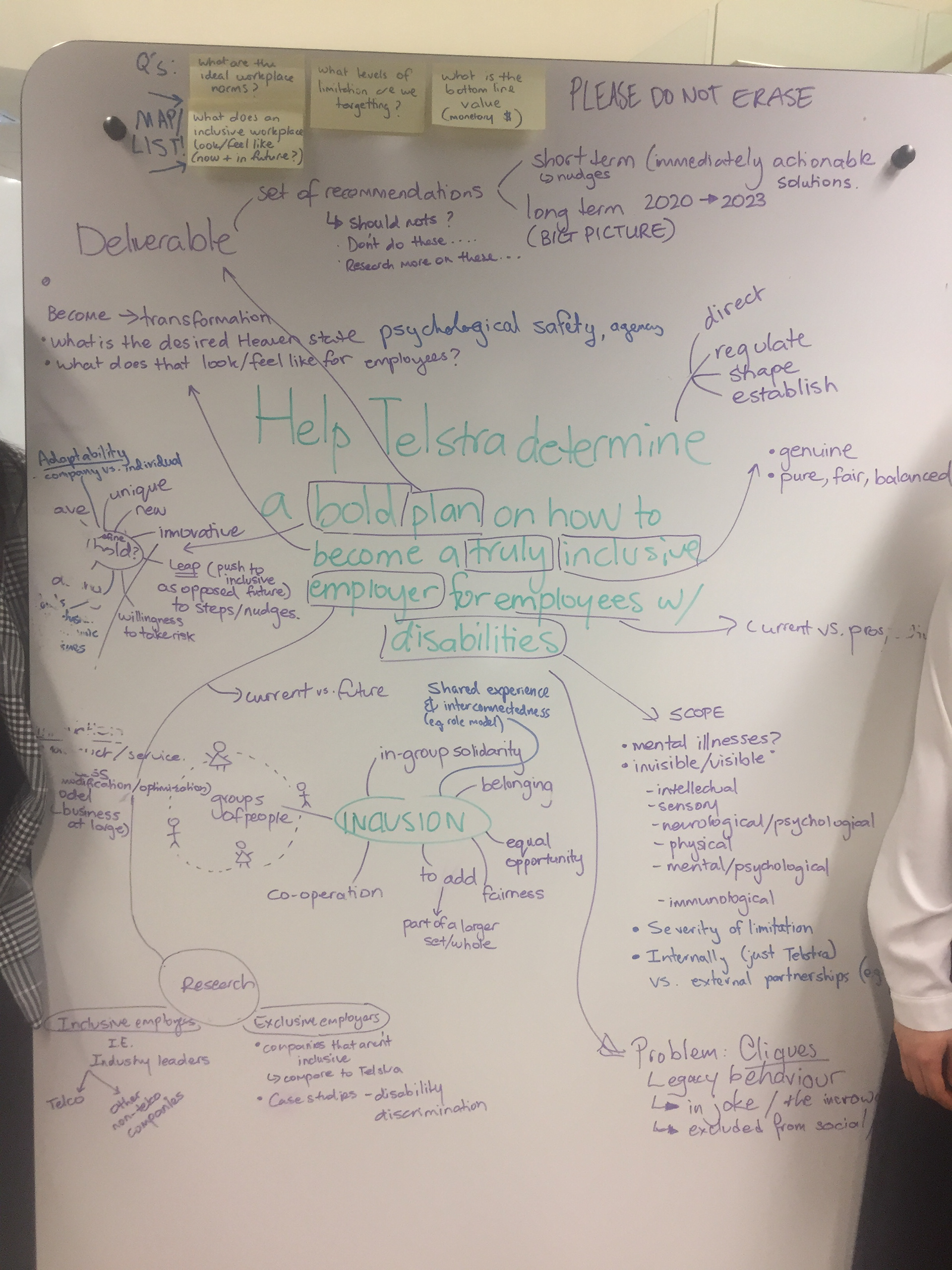
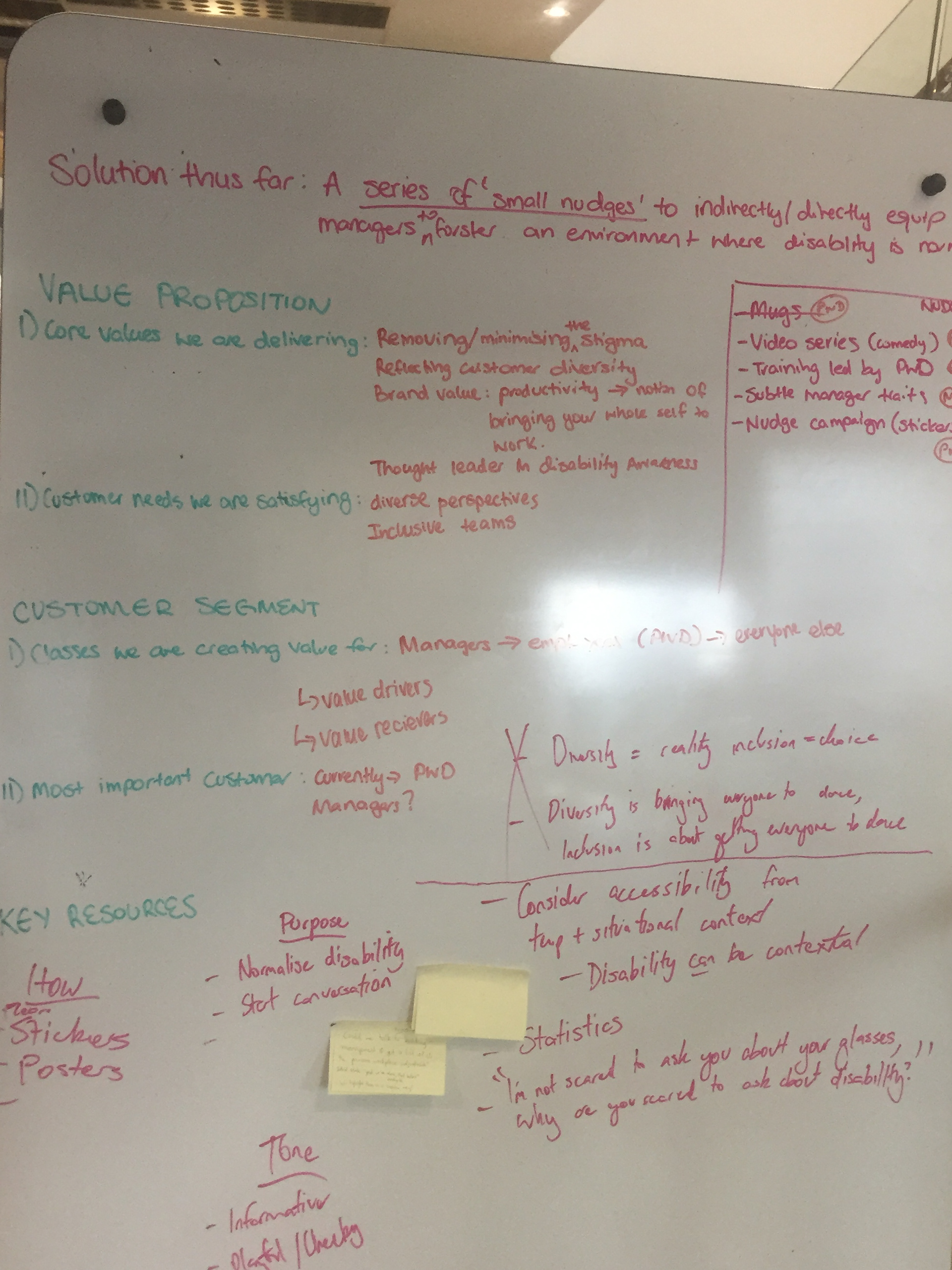
With these nudges we hope Telstra can be a place where managers feel capable, comfortable and confident initiating conversation about accessibility; where accessibility is no longer coined as a one time disclosure but as ongoing conversations of how employees can bring their whole selves to work; and a place where social cohesion and bonds are strengthened so that people feel safe talking about what tools whether tangible or intangible can elevate their potential.
We want to change the environment, by starting to normalise and shift the discourse around accessibility here at Telstra, so that it ultimately becomes a truly inclusive workplace. So, are you ready now to have ‘The Talk'?